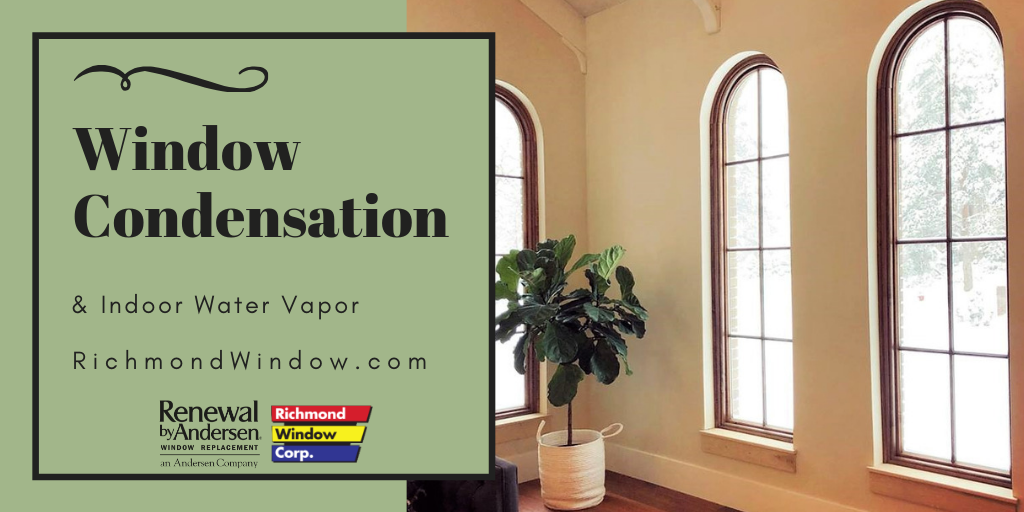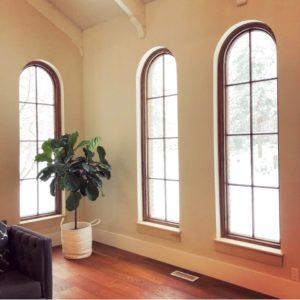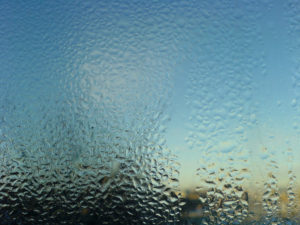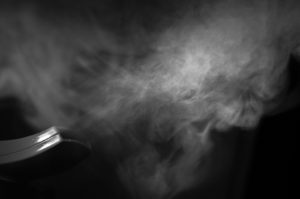
Managing Moisture, Humidity and Condensation in Your Home.
Why is There Condensation on My Windows?
Condensation appears when warm, moist air comes into contact with cooler surfaces.
This can take many forms, a glass of sweet tea on a summer day comes immediately to mind, but also your window glass separating your warm and cozy forever house on a cold winter’s day.
While condensation is most common during the winter months, it’s also important to note that water accumulation can happen anytime the water vapor in the air is a significantly different temperature than the surface it is coming in contact with.
That established, condensation is usually much more noticeable in the winter, often because it is quite rude in trying to obstruct your view out of your beautiful windows.
The moisture that appears in cold weather on the interior or exterior glass of a window or patio door in your house can obscure the view, even freezing on the glass in icy conditions. Another reason to add to our RVA lists of why snowpocalypse needs to stay up north.
My Windows Have Water Collecting on the Inside, is There Something Wrong?
A question we get a lot from our homeowners is concerning condensation on the inside of the window, especially in the cases when new windows begin to collect moisture where old windows did not.
This insightful question has an equally insightful, if counterintuitive answer.
If you are seeing condensation on the inside of your window, you are actually witnessing an indication of the superior quality of this window.
This is because the highest performing windows create better seals and restrict more temperature flow through air leakage in and out of your house when closed, allowing the temperature barrier to be stark enough that condensation gets locked inside your house, then forming on your glass.
Where is All This Water Coming From?
Normal everyday routine can add a surprising amount of indoor moisture to the air inside your home.
Cooking a single meal can add up to two pints of water into the air, every shower the household takes is another half-pint or more, and think of all the steam and vapor that escapes a recently run dishwasher. Every activity that uses water in the household, adds moisture to the air.
Even when you see condensation on windows that aren’t even near the kitchen or bathroom, this is normal practice. Vapor pressure can force moisture through plaster, wood, brick, even cement, leading condensation to occasionally occur far away from the actual source of the moisture in the air.
What About Condensation Building Up on the Outside of My Window?
Condensation collected on the outside of the window is actually similar in practice to the dew that collects on your lawn, occurring mostly during the spring and fall due to cooler nights running into warmer days. This is typically a good indicator of energy-efficient windows and a result of superior seals, vapor and temperature barriers.
How To Do I Prevent Condensation on My Windows?
 Condensation on the inside of your windows, then, is a by-product of humidity in the house. And while some humidity is good, and can make things more comfortable, tame static electricity in carpet, and prevent wood furniture/fixtures from shrinking and cracking, excessive humidity can cause problems in your home—mold or mildew may develop, water seeping into the insulation can freeze and thaw and cause damage to ceilings and walls, etc.
Condensation on the inside of your windows, then, is a by-product of humidity in the house. And while some humidity is good, and can make things more comfortable, tame static electricity in carpet, and prevent wood furniture/fixtures from shrinking and cracking, excessive humidity can cause problems in your home—mold or mildew may develop, water seeping into the insulation can freeze and thaw and cause damage to ceilings and walls, etc.
A good rule of thumb (especially if you live somewhere where the winters are typically very cold), is to maintain as high a level of humidity as you need for comfort, taking steps to lower it if you see signs of condensation on the windows. This can be as easy as turning off the humidifier (if you are running one). Other steps you can take to reduce indoor relative humidity include:
- Cover the earth/dirt floor in your crawlspace with a good vapor barrier.
- Avoid storing firewood in your home.
- Limit houseplants and aquariums. If you have houseplants, try and keep them in a single sunny room and do not overwater.
- Open blinds and drapes.
- Operate ceiling fans to improve air circulation.
- Raise the air temperature of the home (turning the heat up with decrease relative humidity).
- Vent all gas appliances, clothes dryers, and exhaust fans, to the outside.
- Ensure proper ventilation of attic and crawlspace.
- Run exhaust fans in the kitchen while cooking and in the bathroom while showering or bathing. Leave it running for 15-20 minutes after you’re finished or until the bathroom mirror glass clears).










